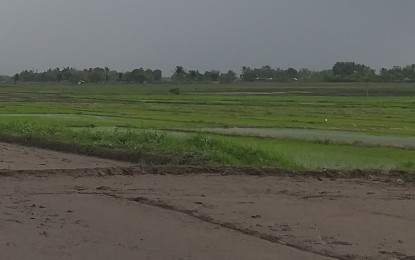
PLANTING RICE. A rice farm in Barangay Dulao, Bago City is being prepared for planting for the first cropping season in June. Dubbed the rice bowl of Negros Occidental, Bago is one of the top rice-producing local government units in the country.(Photo by Erwin P. Nicavera)
BACOLOD CITY -- The City of Bago, one of the country’s top rice producers, is helping its farmers become more efficient amid the implementation of the Rice Tariffication Act, allowing rice to be imported more freely.
Mayor Nicholas Yulo said on Sunday that under the tariff system, necessary interventions from the local government are needed.
“Our goal is really to make our farmers more efficient for them to compete with those in neighboring countries,” he said.
Bago City, dubbed the rice bowl of Negros Occidental, was awarded for the second straight year as one of the top rice-producing local government units in the country during the 2018 Rice Achievers Awards held on May 30.
The southern Negros city is the number one rice producer among the cities and municipalities in Western Visayas, figures of the Department of Agriculture showed.
“More than the award, we aim to strengthen our production mainly to prepare for the possible adverse effects of the rice tariffication measure,” Yulo said.
Under rice tariffication, the goal should be the lowest production cost with a maximized yield, he added.
The City Agriculture Office data showed that Bago City has a total palay production of 119,528 metric tons in 2018 from a harvested area of 11,879 hectares.
Its average yield per hectare increased from 4.2 metric tons in 2017 to 4.43 metric tons last year.
From the previous 20 percent, the city now contributes 25 percent to the total rice production of Negros Occidental.
Yulo attributed their latest achievement to education, transfer of technology, and mechanization.
“We are on this path already. We have felt the initial effects of our efforts especially on farm mechanization,” he said.
Last December, the provincial government piloted the farm mechanization program in the city’s 200-hectare model rice farm in Barangay Taloc.
The area is managed by 160 farmers, who are members of Newton-Camingawan-Para Farmers Association.
Yulo said he hopes the award will inspire them to do more since there is still a long way to go, pointing out that farmers in neighboring countries produce six metric tons per hectare at lower production cost. (PNA)
